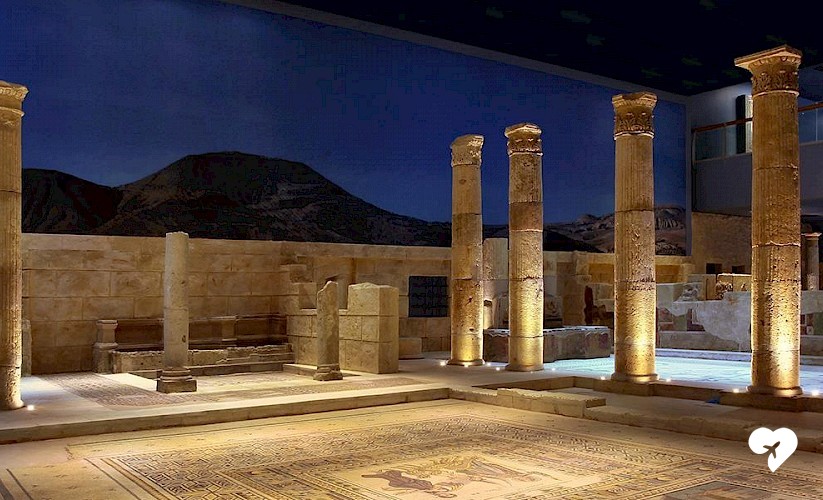The splendid collection of Zeugma Mosaic Museum in Gaziantep alone is probably sufficient to attract enthusiasts of history and culture as well as art historians and archaeologists of the world to visit Turkey. In terms of the floor area of the museum, as well as the surface area of the mosaics exhibited, it is the second largest of its kind in the world. (The largest mosaic museum also is in Turkey). The outstanding artistic quality of the main exhibits as well as the collections of Late Antiquity Church Mosaics and Early Chaldean and Christian iconography attracts visitors to the museum. Some of the scenes depicted in the mosaics are related to ancient literary texts which were lost over the time, raising their importance in terms of the cultural history. Amongst the most exciting archaeological finds of our times, the mosaics unearthed in Zeugma ancient settlements cover a total of 2,500 square metres, and reveal the highest level that the arts reached at the time. There is also a collection of sculptures, columns and fountains from the Roman period. In particular the beauty of the bronze statue of Ares the God of War could easily take the limelight away from the mosaics.
Zeugma: The Magnificent City at the Border of Mesopotamia
Euphrates River, together with its companion Tigris, delineated the borders of Mesopotamia, the cradle of ancient civilisations, and brought fertility to the region for thousands of years. Alexander the Great passed through the Anatolian lands in his quest to conquer the world 2,300 years ago and one of his commanders Seleucus I Nicator later selected the fertile banks of Euphrates River to build his settlement and called it "Seleucia on the Euphrates", a combination of his name and of the river. When the city came under Roman domination in 64 BC, its name was changed to "Zeugma", meaning "the bridgehead". It proved to be an appropriate choice as the city was at the crossroads of the trading routes as well as various civilisations throughout the ages. The city maintained its advantageous position and became so rich that it was one of the four largest cities of the Commagene Kingdom until it was destroyed by the Sassanids. Most of the mosaics displayed in the Zeugma Mosaic Museum were unearthed from the villas of noble and rich people of the city. The most striking mosaics, once covered the walls and even the floors of the villas Poseidon and Euphrates, are currently displayed at the entrance level of the Museum, and they are the best indicators of the riches of the city. They also brilliantly represent the level attained in the art of mosaics at that era. Depictions on them are particularly realistic and detailed, and experts agree that they are amongst the masterpieces of this art form.
.jpg)
Symbol of the Museum: The Gypsy Girl
All of the mosaic panels exhibited in the Museum are works of great mastery. Some of them were crafted with five hundred thousand tesserae, and you can't help admiring the realism and vivacity in which the figures were depicted. Mosaics help visitors visualise the city life during the Roman era and provide a glimpse into the belief system of those days. Nevertheless, the most important piece of the Museum is not one of those large panels, but a comparatively small piece of 2nd century AD, the mosaic of Maenad, which is popularly known as the Gypsy Girl. It is the only remaining part of the floor mosaic of the dining room of the Maenad Villa. The doleful eyes of the figure made the piece the most loved artefact of the Museum, and she is regarded as the Mona Lisa of Zeugma and the symbol of the ancient city and the museum.
Five Awards in Two Years
The Museum was awarded first prize in the category of the Cultural Tourism Investments of Turkey both in 2011 and 2012. In 2012 Presidential Culture and Arts Grand Award, which is considered as the most prestigious awards of Turkey, was given to the Museum. In 2012 and in 2014 it was voted by the customers of TripAdvisor for the Certificate of Excellence.
How to Go?
The Gaziantep Airport is 20 km to the city. There are direct flight connections with Germany. There are indirect connections to other European countries transferring at Ankara or Istanbul to Gaziantep. There are scheduled intercity coach connections with all cities of Turkey.
